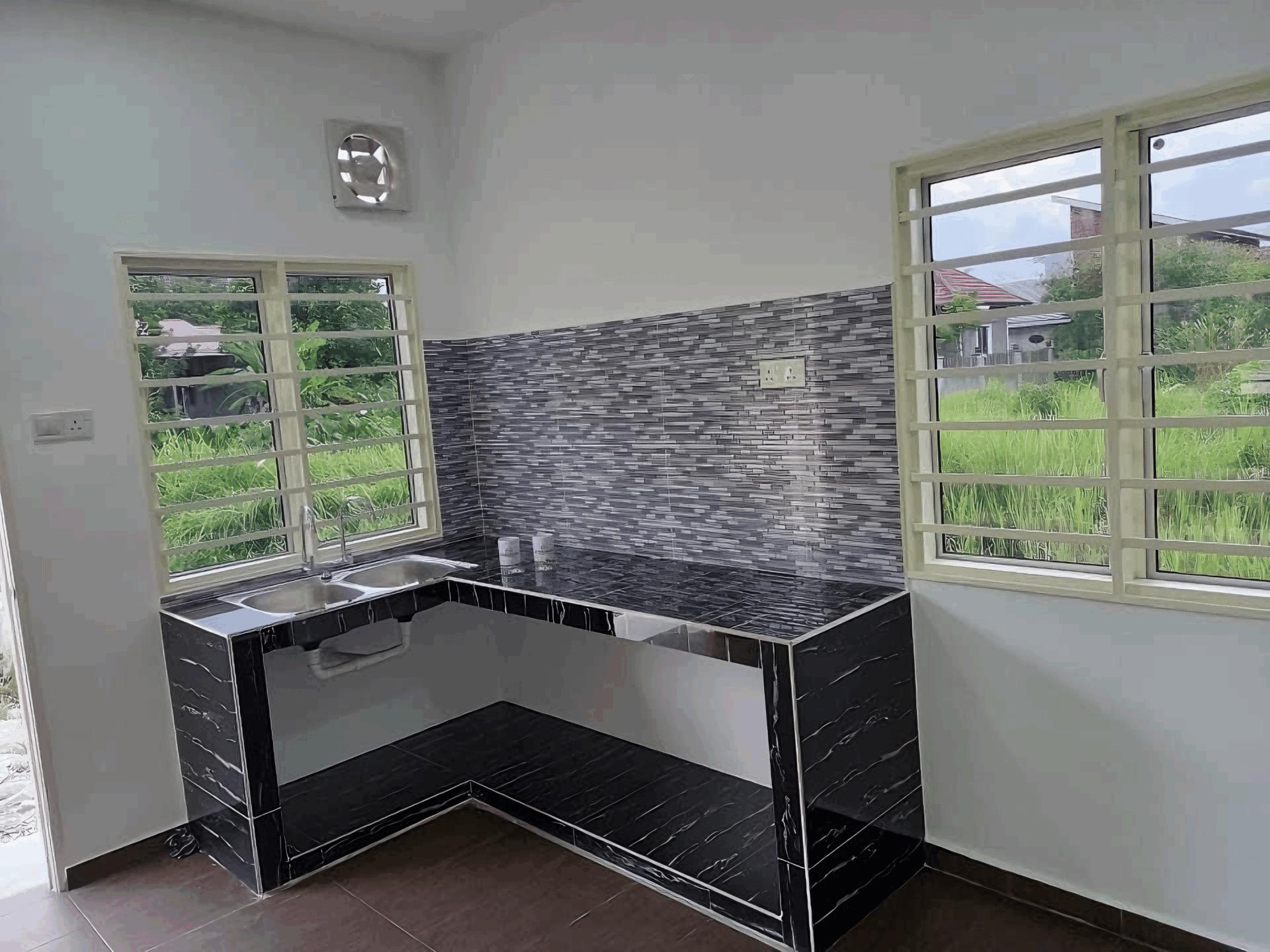
Blog
Why Quality Assurance is the Unsung Hero of Successful Construction Projects in Malaysia | RumahHQ

Have you ever wandered through a bustling construction site, with cranes towering above and workers hustling about, and thought about what truly makes a project successful? It’s easy to admire the grand designs and impressive structures rising into the Malaysian sky, but behind every impressive skyline is a crucial component that often goes unnoticed: quality assurance. While we celebrate the architects and builders, it’s time to shine a light on the unsung hero of the construction world—the quality assurance (QA) team. These diligent professionals work tirelessly behind the scenes to ensure that every nail is driven correctly and every safety standard is met. In this article, we’ll explore why quality assurance is not just a box to check but an essential pillar that supports successful construction projects, ensuring they stand the test of time—both literally and figuratively. So, let’s dig into the importance of quality assurance in shaping the future of Malaysia’s ever-evolving landscape!
The Foundation of Trust: Understanding Quality Assurance in Construction
Quality assurance in construction is more than just a set of procedures; it’s the backbone that supports every successful project. In Malaysia, where rapid development and urbanization are the norms, ensuring that buildings and infrastructure meet the highest standards is paramount. This is where quality assurance shines. By systematically evaluating processes, materials, and outcomes, quality assurance helps prevent issues before they escalate, ensuring that projects stay on track.
One of the cornerstones of effective quality assurance is clear communication among all stakeholders involved in the construction process. Key players such as architects, engineers, and contractors must collaborate and share vital information to preempt misunderstandings. To facilitate this, here are some key points that enhance communication:
- Regular progress meetings.
- Open channels for reporting issues.
- Documentation of all changes and decisions.
Establishing a reliable flow of information not only builds trust but also ensures that everyone is aligned with the project goals.
Moreover, implementing a structured quality assurance framework helps in identifying risks early. By utilizing tools like checklists and audits, teams can monitor compliance and performance metrics effectively. Consider the following metrics that can be monitored:
| Metric | Description |
|---|---|
| Defect Rate | Measures the number of defects found in comparison to total inspections. |
| On-time Completion | Tracks whether projects meet scheduled deadlines. |
| Compliance Score | Assesses adherence to quality standards and regulations. |
By focusing on these metrics, construction teams can refine their processes and maintain the high standards expected in Malaysian construction projects.

Building Confidence: The Role of Quality Assurance in Project Success
In the ever-evolving construction landscape of Malaysia, there’s a quiet force that ensures projects are not just completed, but completed successfully. Quality Assurance (QA) plays a pivotal role in this journey by meticulously checking each phase of construction. From initial plans to final inspections, QA professionals act as the watchful guardians of project standards, ensuring compliance with regulations and minimizing risks. By conducting regular audits, site visits, and tests, they help maintain the structural integrity and aesthetic appeal of buildings, leading to long-lasting outcomes that benefit both developers and occupants.
The impact of quality assurance can be clearly seen in the way it influences team dynamics and stakeholder confidence. When construction teams adhere to QA protocols, they can expect fewer surprises down the road. This means:
- Enhanced communication: Everyone’s on the same page, reducing misunderstandings and misalignments.
- Stronger teamwork: Quality standards encourage accountability among team members, leading to a more cohesive working environment.
- Improved satisfaction: Clients feel secure knowing their projects are overseen by dedicated QA experts, boosting their trust in the process.
Moreover, investing in quality assurance translates to financial benefits despite the initial costs. Here’s a glimpse of how incorporating QA can save money in the long run:
| Aspect | Potential Savings |
|---|---|
| Reduced rework | 30-50% less on budget overruns |
| Compliance penalties | Elimination of fines |
| Warranty claims | Minimized long-term costs |
By incorporating quality assurance into the project lifecycle, Malaysian construction firms not only enhance their reputation but also ensure that every building is a safe, reliable, and enduring asset.

Preventing Pitfalls: Common Quality Issues in Malaysian Construction
In the fast-paced world of construction in Malaysia, quality assurance often takes a back seat, leading to significant pitfalls that can compromise project integrity. One of the most prevalent issues is the inadequate material selection. Using inferior materials not only jeopardizes safety but also shortens the lifespan of structures, resulting in costly repairs down the line. A strict adherence to established standards for materials can mitigate these risks, ensuring that only high-quality components are utilized throughout the construction process.
Another major hurdle construction projects face is poor workmanship. This can stem from a lack of skilled labor or insufficient training programs. Even the best materials can fail if they aren’t installed correctly. Thus, cultivating a culture of continuous learning and on-site training is crucial. By implementing regular workshops and certifications, contractors can improve their teams’ competencies, ensuring that every nail is driven and every joint is bonded in accordance with industry best practices.
Lastly, project management oversight plays a fundamental role in maintaining quality. Projects that lack consistent monitoring often face delays, budget overruns, and miscommunication among stakeholders. Effective oversight can be achieved through the use of digital tools that streamline communication and tracking. For instance, employing project management software can help keep everyone on the same page, reducing the likelihood of errors and ensuring that quality standards are upheld. Here’s a simple table outlining some common tools that can enhance project oversight:
| Tool | Functionality | Benefits |
|---|---|---|
| Trello | Task Management | Visual tracking of tasks and responsibilities |
| Asana | Project Coordination | Streamlines communication and deadlines |
| Buildertrend | Construction Management | Integrates financials, schedules, and client management |
The Ripple Effect: How Quality Assurance Enhances Project Efficiency
Quality assurance (QA) might often slip under the radar, but its role in construction projects is akin to the glue that holds everything together. When we prioritize quality from the outset, it not only helps in meeting project specifications but also drives efficient workflows throughout the construction phases. By identifying potential issues early on, teams can avoid costly delays. Everyone has heard horror stories of projects that spiral out of control due to overlooked details—quality assurance is the antidote to that chaos.
Emphasizing QA leads to a cascade of benefits that resonate across the entire project team. With a solid QA framework in place, workers are more engaged, fostering a culture of accountability and teamwork. Enhanced communication happens as team members feel encouraged to raise concerns and share ideas for improvement. This open dialogue translates into fewer misunderstandings and a smoother construction process. Here’s a quick glance at how QA advances project efficiency:
| Benefit | Impact on Project |
|---|---|
| Early Issue Detection | Reduces rework and delays |
| Enhanced Collaboration | Fosters better communication among teams |
| Cost Savings | Minimizes wastage and budget overruns |
Moreover, a well-crafted quality assurance plan promotes a positive reputation for construction firms, attracting future business. Happy clients often yield repeat contracts and referrals, building a robust client base. By consistently delivering projects that meet high standards, companies are not only boosting their own profiles but elevating the entire industry’s credibility. In Malaysia’s competitive construction sector, strengthening the value of QA can set a firm apart as a leader, demonstrating a commitment to quality and excellence that clients are looking for.


The Cost of Compromise: Financial Impacts of Neglecting Quality
When construction projects skimp on quality assurance, the ripple effect can hit the wallet hard. Initially, it might seem like cutting corners saves money, but the reality is often the opposite. Poor materials and subpar workmanship lead to ongoing maintenance costs that can snowball over time. For instance, a leak in a roof due to inadequate installation could lead to hefty repair bills and potential damage to interiors, not to mention the stress and inconvenience caused to homeowners or businesses.
In Malaysia’s vibrant construction sector, the cost of neglecting quality also opens the door to delays and legal issues. Unforeseen faults can halt projects, disrupting timelines and leading to dissatisfied clients. Imagine a situation where construction is halted due to non-compliance with safety standards; the result can entail not just lost time, but also penalties from regulatory bodies and reputational damage:
| Consequences of Neglecting Quality | Potential Costs |
|---|---|
| Immediate Repairs | Up to RM 50,000 |
| Project Delays | RM 10,000 weekly |
| Legal Fees | RM 20,000+ |
Moreover, the lack of quality assurance impacts future projects and business relationships. Clients remember the experience they had, and they might think twice about choosing a contractor with a history of quality neglect. Therefore, investing in quality is not just an expense—it’s a safeguard for your reputation and a critical factor in ensuring sustained success in Malaysia’s competitive construction environment. Ultimately, the cost of compromise stretches far beyond the initial budget; it affects overall project viability and the long-term success of businesses.


Best Practices: Implementing Effective Quality Assurance Strategies
When it comes to ensuring the quality of construction projects in Malaysia, adopting a structured approach can make all the difference. Effective quality assurance strategies start with engaging all team members right from the planning phase. By focusing on a collaborative environment, everyone from project managers to site workers can contribute their insights, which nurtures a sense of ownership and responsibility. Encourage open lines of communication to facilitate discussions about potential risks and quality standards.
Next, it’s crucial to implement standardized processes that are both comprehensive and adaptable. Developing a Quality Assurance Plan (QAP) tailored to the specific project is vital. This plan should outline the quality objectives, specify the techniques for measurement, and define the roles and responsibilities of the quality assurance team. Regular training sessions should also be held to keep the team updated on best practices and emerging technologies that can enhance quality. Here’s a simple table to illustrate key components of an effective QAP:
| Component | Description |
|---|---|
| Objectives | Defined goals for quality at different stages |
| Roles | Clear assignments for team accountability |
| Metrics | Specific criteria to measure performance |
| Feedback | Continuous improvement based on collected data |
Lastly, regular audits and inspections are non-negotiable. Checking compliance against the established quality standards at various project milestones helps catch issues before they escalate. Using tools like digital tracking systems can streamline this process and ensure transparency. Don’t underestimate the power of feedback—welcoming input from clients and stakeholders can lead to valuable insights and innovative solutions, further embedding a culture of quality within the organization.


Training for Excellence: Empowering Teams through Quality Assurance Education
In the ever-evolving landscape of construction in Malaysia, quality assurance stands as a pillar of success, often overlooked amidst the clamor of deadlines and budgets. By incorporating tailored educational programs, organizations can ignite a culture of quality awareness among their teams. Training workshops and interactive seminars equip personnel with essential skills, ensuring they understand the intricacies of quality control, risk management, and regulatory compliance. This proactive approach not only enhances individual performance but fosters a collective responsibility towards achieving project excellence.
Imagine a scenario where every team member is well-versed in the principles of quality assurance. This is where empowerment shines through. In-house training sessions can cover a wide array of topics, such as:
- Identifying potential quality pitfalls;
- Understanding the importance of documentation;
- Implementing effective corrective actions.
Such initiatives encourage open communication, collaboration, and a commitment to high standards, enabling teams to identify and rectify issues before they escalate into costly problems.
To solidify the importance of ongoing education, companies can track the impact of training through various metrics. Consider this simple table showcasing training outcomes:
| Training Category | Employee Satisfaction (%) | Quality Improvement (%) |
|---|---|---|
| Quality Control Basics | 95 | 20 |
| Advanced QA Techniques | 89 | 35 |
| Regulatory Compliance | 92 | 25 |
This visualization not only illustrates the immediate benefits of investing in quality assurance education but also highlights the ripple effect it has on project delivery and overall organizational success. Quality assurance truly becomes the unsung hero that can transform the construction landscape in Malaysia, paving the way for more structured and efficient project outcomes.


The Future of Construction: Innovating Quality Assurance in Malaysia
The landscape of construction in Malaysia is rapidly evolving, and one of the key drivers behind this transformation is quality assurance (QA). It’s no longer just about meeting the bare minimum; it’s about creating a culture of excellence that ensures every project not only meets standards but exceeds them. By leveraging the latest technologies and methodologies, the construction industry can embrace innovative QA practices that enhance both efficiency and safety. Digital tools, such as Building Information Modeling (BIM) and data analytics, are becoming essential in creating a seamless workflow where quality is built in at every stage.
In Malaysia, the integration of advanced inspection techniques is helping companies identify potential issues before they become costly problems. For instance, using drones and robots for site inspections can provide real-time data and insights, which helps project managers make informed decisions quickly. Additionally, collaborating with local suppliers and contractors who are committed to maintaining high-quality standards can streamline processes and ensure that projects are completed on time. Some of the core benefits of enhanced quality assurance include:
- Reduced Costs: Early error detection saves money in the long run.
- Improved Safety: A focus on QA leads to safer work sites.
- Increased Client Satisfaction: Consistently high-quality projects build trust and loyalty.
To further illustrate the impact of quality assurance in construction, consider the following example of project outcomes based on varying levels of QA implementation:
| QA Level | Project Duration | Budget Overrun | Client Satisfaction Score |
|---|---|---|---|
| High | 6 months | 5% | 95% |
| Medium | 8 months | 15% | 80% |
| Low | 10 months | 25% | 60% |
These figures clearly outline how a strong focus on quality assurance not only shortens project timelines but also significantly enhances overall satisfaction. As the future of construction in Malaysia continues to unfold, prioritizing innovative QA practices will undoubtedly pave the way for a safer, more efficient, and competitive industry.
To Wrap It Up
As we wrap up our journey through the essential role of Quality Assurance in the construction scene here in Malaysia, it’s clear that this often-overlooked hero deserves a little more spotlight. Think of QA as the unseen force that helps shape our skylines, ensuring that our homes, offices, and public spaces aren’t just built, but built right.
In a bustling landscape where innovation meets tradition, the commitment to quality can be the game-changer that sets a project apart. So, the next time you admire a stunning building or enjoy a well-constructed space, take a moment to appreciate the diligent efforts of QA professionals working tirelessly behind the scenes. They’re not just checking boxes; they’re laying the foundation for safety, durability, and excellence.
Let’s celebrate these unsung heroes and push for a culture that recognizes the importance of quality at every stage of construction. After all, in a country rich with potential like Malaysia, investing in quality assurance means investing in a brighter, more sustainable future for everyone. Cheers to that!
kontraktor rumah
bina rumah
pinjaman lppsa
pengeluaran kwsp
spesifikasi rumah
rumah batu-bata
pelan rumah
rekabentuk rumah
bina rumah atas tanah sendiri
kontraktor rumah selangor
rumah banglo
Source link











